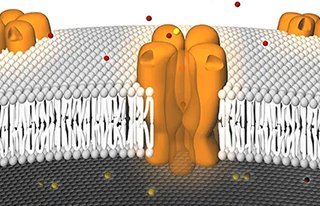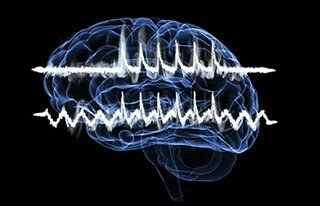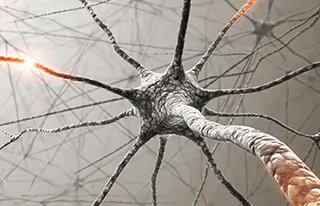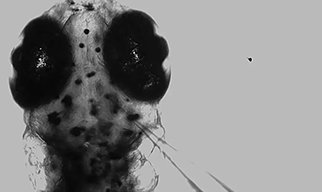Axon Digidata1550B
低ノイズハムサイレンサー付きデータ取得システム
50/60Hzのライン周波数ノイズを除去した高解像度、低ノイズデジタイザ
*Axon Digidata1550B低ノイズハムサイレンサー付きデータ取得システムは
日本国内ではインターメディカル社(http://www.intermedical.co.jp) が取り扱っております。
- 主な特長・機能
- ライン周波数ノイズを除去
- 高分解能トレースの記録
- セルラーネットワーク研究のデジタル化
- アプリケーション
- 細胞パスウェイ解析
- デジタル収集
- 疾患研究
パッチクランプデータの取得を可能にするデジタイザ
Axon™ Digidata® 1550B plus HumSilencer® は、革新的なライン同期ノイズキャンセリング機能 HumSilencer を搭載した市場で最も先進的なアナログ/デジタル信号変換器の一つです。この高度な機能は、入力信号からローカルの50/60Hzライン周波数ノイズと高周波ハーモニクスを学習、アダプター、除去します。デジタイザは、pCLAMPTM 11ソフトウェアと連動し、データ収集と解析を行います。このソフトウェアは、8チャンネルのアナログ収集と4つの収集モードをサポートしています。
Axon Digidata1550B 低ノイズハムサイレンサー付き
データ取得システムの特長
-

ライン周波数ノイズを除去
HumSilencerは最大4チャンネル並列で50/60 hzのライン周波数ノイズを除去します。この機能はソフトウェアのチェックボックスですぐに有効にできます。
-

高分解能トレースの記録
8つのアナログ入力チャンネルはすべて、1チャンネルあたり500 kHzの驚異的なサンプリングレートで同時にデジタル化できます。
-

セルラーネットワーク研究のデジタル化
Digidata 1550Bシステムを使用することで、1台のデジタイザで50/60 Hzのライン周波数ノイズのないセルラーネットワークを記録することができます。
-
50/60Hzノイズキャンセリング
HumSilencerは、最大20 V peak-to-peakの入力信号から、ローカルの50/60 Hzライン周波数ノイズパターンと関連する高周波ハーモニクスを学習、アダプター、除去する高度な機能です。
-
ノイズキャンセリング
HumSilencer はフィルタリングではなく、取得した信号に影響を与えません。周波数変化、振幅減衰、位相シフト、DC電圧変化などの信号歪みを引き起こしません。
-
幅広い入力信号
Digidata 1550Bは、-10~+10 Vの幅広い入力信号をデジタル化します。
-
HumSilencerアダプター
HumSilencerはノイズの振幅の変化を自動的に認識し、1秒以内にノイズを除去して適応します。
-
pCLAMP 11ソフトウェアに最適化
pCLAMP ソフトウェア・スイートは、電圧クランプ、電流クランプ、およびパッチ・クランプ実験の制御と記録のための、最も広く使用されているパッチ・クランプ電気生理学データ収集および解析プログラムです。
-
3つのコンフィギュレーション
3つのコンフィギュレーションをご用意しています: Digidata1550B4は4つのHumSilencerチャンネル付き、Digidata1550B1は1つのHumSilencerチャンネル付き、Digidata1550B0はHumSilencerチャンネルなし。
対応アプリケーション
-
細胞パスウェイ解析

イオンチャネルは多くの細胞経路に関与していて、膜電位の変化や他の分子の有無に応じたイオンチャネルの機能を理解することは、細胞の分化や遊走、疾患状態、神経細胞間のコミュニケーションなど、正常および異常な生物学的プロセスにイオンチャネルがどのように関与しているかを正確に理解する上で重要です。
-
デジタル収集

アンプが取得する電流または電圧信号はアナログ信号ですが、高分解能のパッチクランプ測定に必要なデータ解析を行うには、アナログ信号をデジタル信号に変換する必要があります。アンプとコンピューターの間に位置するデジタイザーは、この重要なタスクを遂行します。信号品質は極めて重要であり、サンプリング周波数によって影響を受けます。最新世代のデジデータ・デジタイザーは500kHzでサンプリングし、50/60Hzのライン周波数ノイズを除去するHumSilencerを装備することができます。
-
疾患研究

イオンチャネルは、高血圧、不整脈、消化器疾患、免疫疾患、神経筋疾患、病的疼痛、癌など、多くの疾患に関与しています。特定の疾患においてイオンチャネルが果たす役割を正確に理解することによって、研究者は、疾患の経過を変えるような方法でイオンチャネルに影響を与える方法を見つけることができるかもしれません。
その他のアプリケーション
Axon Digidata1550B 低ノイズ
ハムサイレンサー付きデータ取得システムの仕様
| 最大入力信号(ノイズ+信号の合計) | ±10 V |
|---|---|
| 最大ノイズ振幅 | 20V、ピーク・ツー・ピーク(0V信号時) |
| ノイズキャンセリング | 低周波(50 Hz / 60 Hz)および10 kHzまでの高調波 |
| キャンセル対応時間 | <1秒 |
| 入力チャンネル数 | 8 single-ended |
| ADCの数 | 8 |
| サンプリング率 | 1 Hz - 500 kHz |
| 入力範囲 | -10.000 V to +10.000 V |
| 入力抵抗 | >1 MΩ |
| ゲイン値 | 1 |
| チャンネル数 | 8 |
| DAC数 | 8 |
| 出力範囲 | -10.000 V to +10.000 V |
| 出力インピーダンス | < 0.5 Ω |
| 信号グランドへの出力短絡 | ±25 mA |
| ビット数 | 8(16のうち)ソフトウェアでサポート |
| SCOPE | 専用トリガー出力 |
| 出力ドライバー | アドバンスドCMOS(AC)対応 |
| 出力電流 | ±4 mAソース、ケーブル |
| タイプ | USB 2.0ブレード |
| 長さ | 3m |
| 入力タイプ | TTL互換 |
| TAG | ライジングエッジ・センシティブ |
| 分解能 | 16ビット |
詳細を見る
-
試薬・消耗品・アクセサリー
該当の試薬・消耗品はありません。
-
保守サービス・サポート


